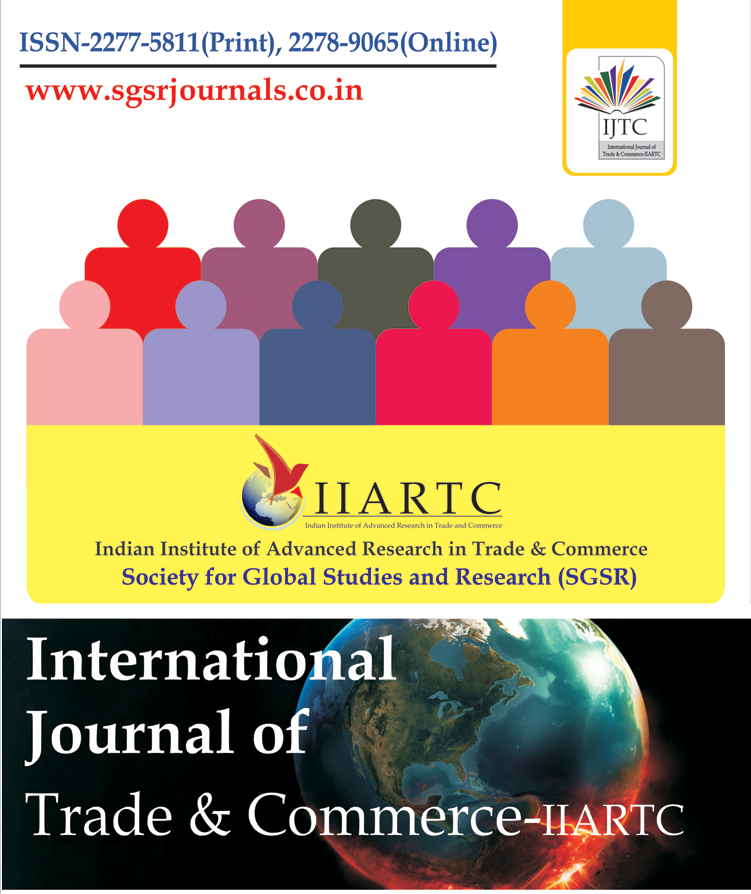Home ⇨ International Journal of Trade & Commerce-IIARTC

International Journal of Trade & Commerce-IIARTC
Impact Factor (IF):5.135 (COSMOS), IF:7.249 (ISRA), IF:3.721 (ISI)
ISSN:2277-5811 (P), ISSN:2278-9065 (O)
Frequency: Half Yearly
Opportunities and Challenges of Demonetization
A cashless economy is one in which all the transactions are done using cards or digital means. The circulation of physical currency is minimal. Indians use too much cash for transactions. The number of currency notes in circulation is also larger than in other large economies. On eighth November 2016 the Prime Minister of India took a brave step of demonetization of INR 500 and INR 1,000 currency notes. Currency of Rs 500 & Rs 1000 notes was withdrawn from the economy. Today online payment option is popular in urban areas as compared to rural areas. Our society is mainly based on cash transactions and most of the people are not aware to digital payment methods. This move will achieve the twin objectives of economic growth and financial inclusion. It will help to fight the problem of counter currency. The result of it would be known in near future but there are various challenges to be faced by people. The global average Internet connectivity speed is 7 Mbps, according to the Akamai report. South Korea leads the APAC countries with the highest average Internet speed of 26.1 Mbps, and India with 5.6 Mbps of average connectivity speed. This creates hurdel to make online transaction. The infrastructural facilities should be made better to facilitate online transactions/banking transaction without using currently physical form.
Author:Pulkit Agarwala*, Kamlesh Kumarb
Abstract:A cashless economy is one in which all the transactions are done using cards or digital means. The circulation of physical currency is minimal. Indians use too much cash for transactions. The number of currency notes in circulation is also larger than in other large economies. On eighth November 2016 the Prime Minister of India took a brave step of demonetization of INR 500 and INR 1,000 currency notes. Currency of Rs 500 & Rs 1000 notes was withdrawn from the economy. Today online payment option is popular in urban areas as compared to rural areas. Our society is mainly based on cash transactions and most of the people are not aware to digital payment methods. This move will achieve the twin objectives of economic growth and financial inclusion. It will help to fight the problem of counter currency. The result of it would be known in near future but there are various challenges to be faced by people. The global average Internet connectivity speed is 7 Mbps, according to the Akamai report. South Korea leads the APAC countries with the highest average Internet speed of 26.1 Mbps, and India with 5.6 Mbps of average connectivity speed. This creates hurdel to make online transaction. The infrastructural facilities should be made better to facilitate online transactions/banking transaction without using currently physical form.




